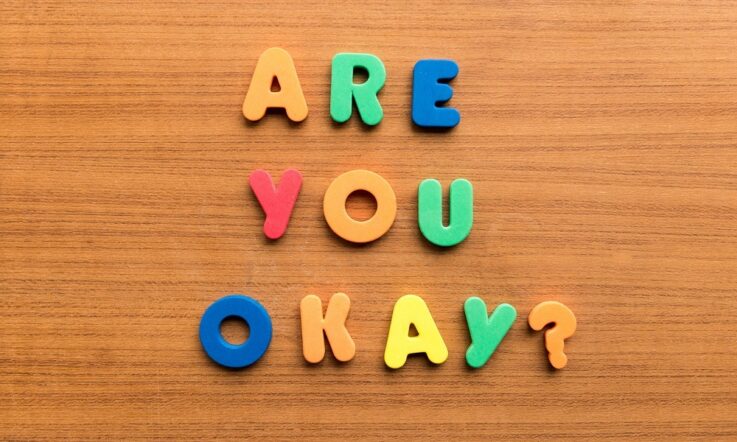Effective teaching and learning go hand in hand with supporting the health and wellbeing needs of students and, just as importantly, staff and school leaders.
In this Q&A we speak to high school teacher and author Sue Webb, who has been in the profession for more than 30 years. Her book Teachers Cry Too shares her struggle with and recovery from mental illness.
Hi Sue, it’s great to catch up with you for this Teacher wellbeing Q&A. Your book was released at the end of last year. What’s happened since then?
I have continued to explore the causes and impacts of teacher burnout, and the ways in which individuals and schools can work together to mitigate the risk factors. Through [the Instagram account] @teacherscrytoo I’ve created an accessible space to share information, strategies, and emerging research about the links between wellbeing, productivity, and excellence in education.
Supporting beginning teachers to transition successfully into the profession remains a personal interest and I’m thrilled to have been invited to work with early career teachers in preparing them for the sometimes-invisible emotional load of teaching. Alongside various media commitments, I have developed a wellbeing program for early career teachers which will commence implementation in Term 2.
Currently, I’m teaching several days a week in the classroom whilst continuing to use Teachers Cry Too as a platform to promote teacher wellbeing. I’m looking forward to partnering with tertiary institutions and school communities to ensure all teachers are well-equipped to enjoy a rewarding and sustainable career in education.
What prompted you to write the book and why was it important for you to share your story with others, particularly teachers?
As someone who had never experienced mental illness before, I set out to answer 2 questions: What happened? And why did it happen? I’ve tried to tell the story as it unfolded for me, because I wanted to capture the reality of navigating life and work when you aren’t functioning as you have previously. The book began as a personal attempt to make sense of the emotional chaos I suddenly found myself in.
As the story came together, I realised it is an all-too-common experience – teachers are dealing with unsustainable levels of stress, and it's taking a toll. Many try to manage it on their own, as I did. In sharing my story, I hope to reassure others that it’s possible to move beyond burnout to re-engage with a career that many have spent years building.
Why now? Because younger and younger teachers are experiencing burnout and we are losing too much talent. I believe we can reverse attrition rates, but we need to act decisively to prevent teachers reaching crisis point in the first place.
Do you think the profession is more open to talking about these issues than 10, or even 5, years ago?
Yes, encouragingly, I think there are constructive conversations taking place, but we still have a lot of work to do to ensure that mental health and wellbeing is an integral part of professional culture.
Whilst the pandemic has exposed and widened the cracks, many of the issues facing education were evident before COVID-19. Universities report a decline in the number of Initial Teacher Education applications, many teachers are either quitting or reducing their workloads by opting to work part-time (as I did) and school leaders are retiring early, due to heavy workloads and the added pressure of teacher shortages.
Schools can’t afford to ignore the need to prioritise staff wellbeing in such a climate. The more pertinent question is how the profession can respond, and I think we’re scrambling. Many of the wellbeing initiatives I see in schools are well-intentioned but are still focused on boosting morale. Whilst a good starting point, without a whole school wellbeing strategy which is embedded in school culture and adequately prioritised, funded, and resourced, success will be limited.
Self-care is an important component of wellbeing in the workplace, but perhaps more challenging is how schools can implement systemic, long-term change so that the system and the people in it are not constantly trying to operate beyond capacity.
Can you explain a little about your own experience with mental health and how it impacted your working life?
Because my experience had a sudden onset, it was difficult to reconcile the person I was pre- and post-episode. Following what was initially diagnosed as a panic attack, the immediate symptoms were debilitating: disorientation, memory loss, sleeplessness, incessant and irrational overthinking, paranoia and nausea. I also developed OCD behaviours based on an obsession for safety that lingered constantly.
At school, almost every aspect of my working life was affected – I struggled to process or retain information, which is a big problem for teachers who are bombarded with information daily, often of a sensitive and confidential nature. I was thrown by any last-minute change to daily organisation and found it difficult to make even low-level decisions. As we know, teachers make hundreds of decisions each day, so this hindered my ability to do the job as I had previously. Difficult parent interactions which I usually managed as a normal part of the job, sent my anxiety levels skyrocketing. All of this was out of character for me, so there were red flags everywhere.
Because I’ve been teaching for a long time, I was able to rely on well-established classroom routines, so for the most part I functioned at a reasonable level in the classroom. But because I no longer trusted my judgement, I avoided unpredictable environments —like school camps for example. Gradually I stopped participating in extra-curricular activities and became increasingly isolated from my colleagues.
Paradoxically, the more I lost control, the more desperate I became to make it appear otherwise, and I developed pretences and avoidance strategies. Like many teachers, I told myself that if I could hold on until the term break, things would get better, but as is the case with burnout, they didn’t. Inevitably the symptoms returned a few weeks into the following term, and this cycle repeated for 4 years.
Can you share some of the symptoms and actions that helped you in your own journey to rebuilding your health and wellbeing?
It was clear early on that I couldn’t continue in my leadership role (I was year 7 Co-ordinator when I experienced my first panic attack), and I made a personal decision that it wasn’t professionally responsible to continue in the role, stepping down from that position (using my husband’s need to work away as an excuse) to return to classroom teaching. I also reduced my workload to part-time to alleviate some of the work stress. Of course, this came with financial implications for our family, but I knew I needed to prioritise my health or risk further decline.
I did a deep dive into researching burnout in the teaching profession, and over time developed a better understanding of my illness. I also became better at recognising and managing the symptoms when I felt them escalating.
To short-circuit my overthinking, I used a countdown method, and began time-mapping – identifying specific times of the day or situations that made me feel anxious so that I could prepare coping strategies in advance. I learned how to work differently by establishing strict boundaries around emails, my work hours, and gradually reclaimed a better work-life balance by stripping out extras, knowing there would be time to recommit to extra-curricular activities when I felt well enough.
As I’ve worked through recovery, I’ve been able to relax some of these boundaries, but some have remained intentional choices. I limit my to-do list to 3, and I’ve stopped working at night. Instead, I get up earlier in the morning and work when I’m quicker and more focused. This change has enabled me to reclaim evenings with my family and prioritise good quality sleep.
I’ve also accepted that I can’t get to everything every day. Despite feeling pressed, most things are not urgent, and I’ve noticed that a surprising number of issues resolve themselves. It’s important to understand that recovery is an active process that takes time.
As someone whose been through it, what should school leaders be thinking about in terms of supporting staff health and wellbeing?
This is an important question and one that I’m often asked. The first point I’d like to make is that many school leaders themselves are struggling with their mental health, experiencing high levels of workload stress, burnout, and depression. As was the case for me, the cumulative effects of this can lead to a point of crisis, and this is what we’re seeing now with almost one in 2 principals triggering a ‘red flag’ warning them of serious risk to their health due to stress and thoughts of self-harm.
I recently spoke with a principal who said they’d been working 21 days straight without a break. Many principals are working 60 hours a week. A recent survey by ACU found that the number of principals wanting to retire early or quit has tripled since 2019.
This is happening at a time when school communities need steady and consistent leadership in the face of post-COVID behaviours and teacher shortages. It is so important that we position mental health and wellbeing as a priority for everyone – students, staff, and school leaders.
That said, school leaders set the tone and decide how to deploy resources. They can proactively support staff health and wellbeing by ensuring that wellbeing initiatives are embedded in school culture and included in induction programs. In almost every survey I’ve read, teachers name lack of autonomy, a culture of micromanagement and time-consuming compliance as eroding job satisfaction, so effective leadership is about shielding staff from these factors wherever possible.
I’m concerned about the impact of vicarious trauma on staff and the fact that many teachers internalise their emotional responses. One of the most difficult chapters for me to write was one titled Loss in which I share the impact on me as a first-year teacher after one of my students died by suicide. Inexperienced and unprepared, I didn’t know how to process such a traumatic loss. Years later, I was involved in Daniel Morcombe’s funeral and realised that I hadn’t grieved properly for the students I’d lost over the course of my career. For this reason, I’d like to see schools establish programs that enable teachers to debrief distressing and traumatic experiences.
How school leaders respond when someone reports having mental health issues at work is important. It takes a lot of courage to approach a line manager, to tell them that you’re struggling, no matter how caring or supportive that person may be. In my case the reasons for this were twofold: firstly, I wasn’t thinking clearly, and wasn’t able to articulate my needs because I didn’t really know what they were – I just knew that I wasn’t coping. Secondly, I was hesitant in case I compromised myself professionally. Would coming forward jeopardise being considered for future opportunities?
So, I think what someone in my position needs most is reassurance that they’ve done the right thing in coming forward and disclosing. Because wellbeing is such an individual thing, blanket approaches won’t work for everyone, and school leaders need to respond sensitively on a case-by-case basis.
What about teachers who are reading this thinking that they too would like to reach out for help but don’t know where to start, or thinking that they want to keep it a secret?
Teachers tend to put on a brave face, but we know that they are more susceptible to work-related stress, burnout and psychological distress when compared to other occupations. In fact, Dr Peta Stapleton (Associate Professor in psychology at Bond University) found that over half Australian teachers suffer from anxiety and nearly one-fifth are depressed.
Australian teachers have higher stress levels than the OECD average, and yet the industry standard utilisation rate of Employee Assistance Programs for teachers is less than 2%. Clearly, there is a need to examine the EAP model, increase the utilisation rate, and offer additional support programs.
I would counsel people to access medical support sooner rather than later. Apart from the obvious health reasons, it will be easier to access leave if you need it. Make an appointment with your GP as soon as you start to experience symptoms of burnout, prolonged fatigue, or higher than usual levels of anxiety, especially if this is persistent. It’s important that a medical professional is aware of your situation.
I’d encourage better take up of the free, confidential counselling services available via your Employee Assistance Program – and remember, you don’t need to wait until you reach crisis point before you pick up the phone. One school leader I spoke with schedules regular phone calls each month to check in with someone who can help him process the intensity of his work.
Don’t be afraid to ask for time off when you need it – it’s far preferable to take leave now than push through and risk the symptoms worsening. One thing that helped me was educating myself about the causes, symptoms, and strategies I can use to self-regulate. There are many reputable providers who offer access to free, helpful information.
Disclosure is a personal choice. It’s easier if you have a supportive principal whom you trust. It is a confidential process and the level of detail you provide is up to you. The principal will require documentation from your GP if you need to access extended leave.
Finally, don’t confuse privacy with secrecy. Trying to keep my illness a secret did not serve me well – my avoidance, excuses and pretence were exhausting, and hindered my recovery. I can only speak here from personal experience, but the vast majority of the school leaders I’ve worked with have been supportive, compassionate and committed to caring for their staff.
You can contact Sue Webb through teacherscrytoo@gmail.com or join the conversation via the @teacherscrytoo Instagram page. Copies of Teachers Cry Too are available through Amazon, Booktopia, Ocean Reeve Publishing, or via the links @teacherscrytoo



